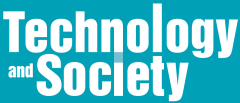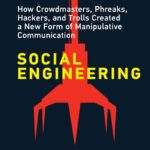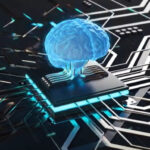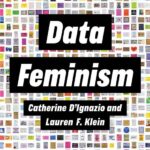What role does and can AI play in us being able to enjoy security in our places and spaces? Perhaps we could design technology-enabled spaces for the purpose of strengthening the community and empowering community action.



What role does and can AI play in us being able to enjoy security in our places and spaces? Perhaps we could design technology-enabled spaces for the purpose of strengthening the community and empowering community action.

The purpose of this special issue is to explore and address complex securitization-related challenges, from a broader perspective and across various dimensions and sectors, that transcend disciplinary boundaries, focusing on the role of technology relevant to the securitization of people and place, while also considering the transdisciplinarity and the socio-historical originals of securitization.

Generation Z and Millennials face different types of insider threat, in three different dimensions of space: to resources, to citizenship, and to boundaries.

It was a wonderful experience for me to live all of these events and realize later how everything is really connected. Where will new generations of kids get their “social skills” developed, considering that most of their social relations and interactions happen virtually through their phones or computers while avoiding in-person interactions?

Stephen H. Unger, one of the founders of the IEEE Society on Social Implications of Technology, Life Fellow of the IEEE, Professor Emeritus of Computer Science and Electrical Engineering at Columbia University, champion of engineering ethics, and a prominent figure within SSIT, has died at the age of 92.

Ketra A. Schmitt, Associate Professor in the Centre for Engineering in Society at Concordia University, Montreal, Quebec, Canada, will become Editor-in-Chief (EIC) of IEEE Technology and Society Magazine (TSM) starting January 1, 2024.

The fact that science denial is deeply implicated in identity helps explain why science deniers are usually unmoved by contrary evidence that on a purely rational level should be extremely convincing.

Strengers, an Associate Professor of Digital Technology at Monash University, and Kennedy, a postdoc at RMIT University, Melbourne, VIC, Australia, argue that if we proceed down the current path of making our digital assistants, fembots, gynoids, and voice-activated devices look, sound, and/or behave like simulacra of women, we risk reinforcing traditional gender stereotypes in ways that could rebound on real women.

Dr. Nolan and his colleagues were responsible for developing standards to protect against radiation exposure in the laboratory and during the Trinity Test in July 1945. The physicians were continually frustrated by their inability to convince the military about the dangers of radiation but “there is considerable evidence to suggest that the doctors were ever mindful of potential legal consequences and careful to take precautions to protect themselves and the military from future litigation.”

Social media companies have intentionally created platforms that actively spread disinformation. What can we do to protect our society against disinformation? A good place to start would be limiting how large and powerful these social media platforms can get.

When you actively participate in an area in which you are “passion-driven,” others notice, and opportunities will open for you. For young people, I suggest
find your passion, volunteer, and get involved.

Young people’s unique understandings and perspectives are often not considered in debates and discussions around privacy and security. This article outlines a youth-centric notion of digital privacy and guiding principles around privacy developed by young people from Antigua and Barbuda, Australia, Ghana, and Slovenia.

Technology has always been about more than simply a route to increased productivity and economic growth; technology also provides the opportunity to enhance, enrich, and empower—basically, to improve shared qualitative values or people’s quality of life (however that is measured). On the flip side, technology also provides the opportunity to develop and project organizational control, which itself can be weaponized to quantitatively determine human value as an asset to that organization, or to reinforce asymmetric power relationships.

From the social unity of Ubuntu to the socially ingrained dispositions of habitus, our authors helped us to perceive the value of intentionally weaving together threads of history to shape the present and future social fabric of humanity.

Stefan Höhne dives into a wealth of letters—correspondence sent to the New York City Transit Authority in the period 1955–1968.

Professor Katina Michael of Arizona State University in the School for the Future of Innovation in Society discusses ChatGPT and its implications. From The List Show TV.

In Data Feminism, authors Catherine D’Ignazio and Lauren F. Klein do not merely deal with data. They pair data with feminism. Here, feminism is deployed as a “shorthand for the diverse and wide-ranging projects that name and challenge sexism and other forces of oppression, as well as those which seek to create more just, equitable, and livable futures.”

Good Pictures is about the advice given to photographers—mostly amateurs—on the techniques they should use to improve their work. Of course, the advice is intimately tied to technological developments in photography as well as the desire of camera makers to sell new products.

We would act wisely if we turn to alternative ways of thinking, other wisdom traditions, and learn from them. Ubuntu philosophy can help to draw attention to social issues, for example, the horrors of colonialism, exclusion, and oppression, and to find ways to promote social justice. Aboriginal wisdom can help to apply diverse ways of knowing, for example, knowledge that is related to place, to kinship, to stories, to patterns—not only knowledge in books. The Indigenous cultures and wisdom of the Americas can teach us how to organize economic and political systems more sustainably and to develop more caring relationships with nature. And Confucian culture and wisdom can help to design and apply technologies in ways that support us as relational and developmental beings.

While it is true that technology is addressing problems and making elements of some people’s lives easier, there are aggregate measures that suggest a troubling trajectory.